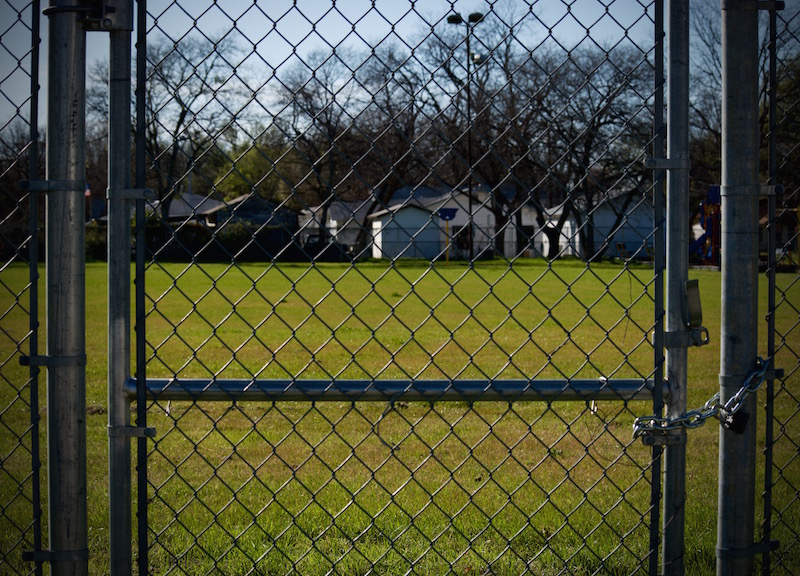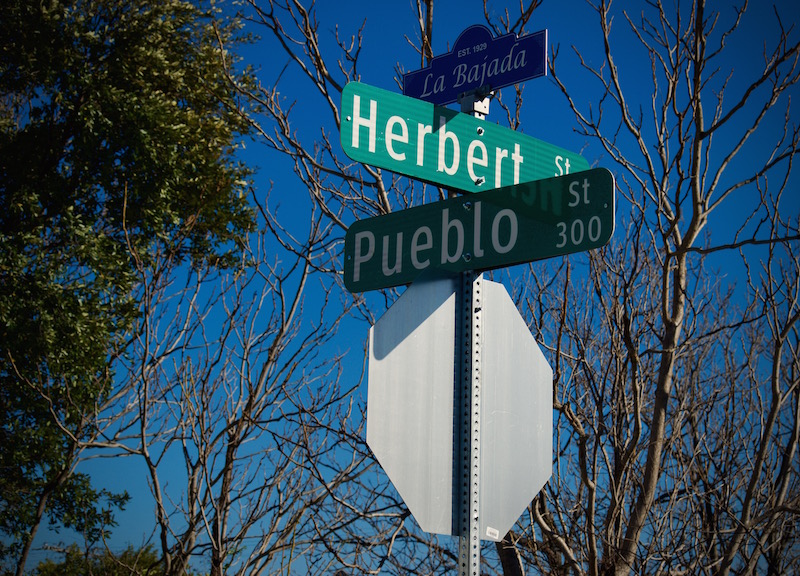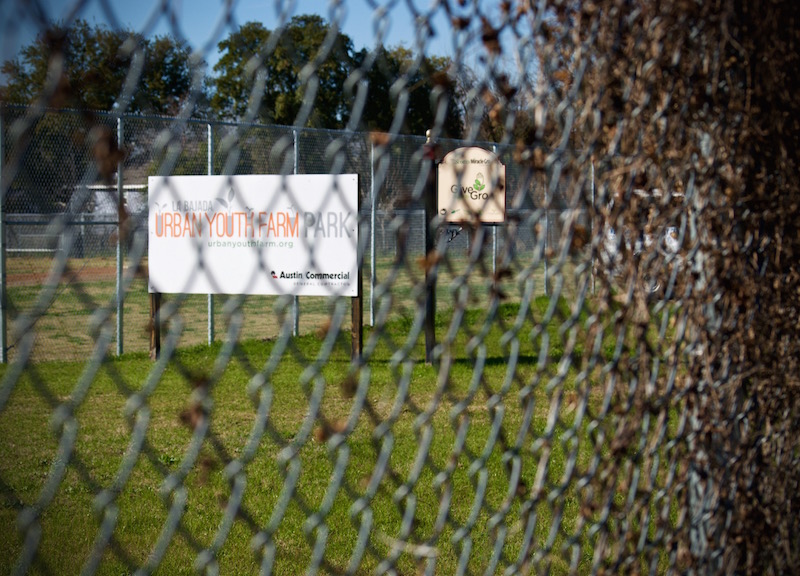An Urban Youth Farm Is On Its Way To West Dallas, Presuming Long-Needed Funding Comes.
Right next to Four Corners Brewery and the nearby Trinity Groves in the La Bajada neighborhood, 4.5 acres of land awaits construction. Currently, a chain link fence encloses the entire plot and signs warning of security surveillance are posted along the edges of the property. Inside, a brand new baseball diamond is gathering more dust balls than fly balls. The soccer field is unkempt with only one rusty goal helplessly awaiting its removal.
Here at the corner of Herbert Street and Pueblo Street is the future site of the La Bajada Urban Youth Farm.
Soon enough, construction of the LBUYF will be underway, and, as one of West Dallas' most ambitious plans, it aims to be a large part of the La Bajada community. The LBUYF is a multi-faceted project that will incorporate urban farming, youth development and community bolstering. By hiring high school-aged interns interested in learning about science, math and business, the LBUYF hopes to be a resource for helping disadvantaged youth in the area get a hands-on education through maintaining a viable urban farm. Their families, from their grandmas on down to their little brothers, will also have an opportunity to engage with LBUYF.
The La Bajada area, with 93 percent of its residents Hispanic and being predominantly of lower socio-economic families, does not have much access to fresh foods. In other words: La Bajada is a food desert. The people behind LBUYF, like project manager Keith Nix, see bringing fresh foods into the area as an integral part of their mission. The food grown on the farm will be shared with the interns, the community and businesses in the area — namely those at Trinity Groves. This important lesson in sustainable food production, says Nix, will give these young people first-hand experience on how growing healthy, local food is vital to the environment and humankind.
“We think that doors will open to the kids that are there even more than just them learning how to raise plants, how to cook fresh food and how to communicate to their families back home that they should be having roasted eggplant instead of a burger from some fast food place,” Nix says.
The La Bajada project, modeled after an urban farm in New Orleans called Grow Dat, was developed in 2014 by Donald Gatzke, the former dean of the University of Texas at Arlington School of Architecture, along with his graduate students in the architecture program. Together, they devised a blueprint for the farm and engaged with the La Bajada neighborhood to invite input and feedback on the major development strategies for the LBUYF, with some additional help from the West Dallas Community Center. The community was interested in structuring the LBUYF into a park that would provide a place for children to play baseball, learn about farming and horticulture, and gather with their friends and family. In response to that initial action, the developers of the LBUYF constructed a regulation little-league baseball diamond that has yet to open to the public.
But, at this point, any additional construction on the farm has been halted due to a lack of funds, as well as other obstacles concerning urban farm codes that were written by the city before the LBUYF could break ground.
“We can't have any kind of a retail operation,” Nix says. “We can't have a farmers market. There's a parking problem. There's a commercial problem there in the neighborhood. It has to be open to the public all the time. We had to adhere to certain drainage requirements. We had unbelievably high engineering fees because of the astuteness that the city has on being sure that drainage and concrete's engineered properly. All those kinds of things.”
Yet Nix is still optimistic that the LBUYF and the team behind it will reach their financial goal of raising $1.5 million within the next couple of months, which will be enough to complete construction and keep up three years of maintenance on the land, according to UTA's official plan. Currently, Nix says they are about $400,000 away from their final mark.
They can accomplish their mission by accruing private donations large and small. The ScottsMiracle-Gro company has already awarded the LBUYF $40,000 as part of the Gro1000 program that helps fund projects having to do with community food production. Recently, the Eugene McDermott Foundation also donated $75,000 to help get construction underway, Nix says. Although the project is behind schedule, he remains confident that the LBUYF concept isn't in danger.
When LBUYF does finally open, the farm itself will cover three acres of land that will produce all-natural and organic fruits, vegetables and flowers. The farming practices will be overseen by an experienced agriculture group from Texas A&M University, which Nix says has been contracted to ensure that the crops will thrive and be plentiful. The LBUYF will try to employ sustainable energy sources such as solar power wherever possible. An office and a commercial kitchen will also be featured along with a pavilion for community events and performances.
As for upkeep, the UTA developers will handle the day-to-day maintenance together with the paid interns hired to work on the LBUYF. In order for the interns to be admitted into the program, they must be vetted by the Trinity River Mission. The best candidates for the job will be interns who show they are interested in attending college and who have set goals for themselves to become successful citizens. The fostering of this positive work environment is paramount to the project's plans.
More than any of that — and more than just providing the yuppie foodies of Trinity Groves with goods to fulfill their organic produce obsessions — this youth program aims to empower disadvantaged people, pulling them out of harm's way. It's also a way for the quote-unquote new West Dallas to preserve some of the eclectic nature of the old West Dallas.
“The question was raised: 'Will this project enhance the value of the neighborhood?'” Nix says. “That's not the point. The point is to enhance the heart and soul of the neighborhood.”


















































